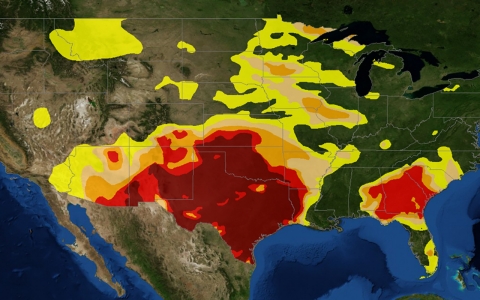Along the sun-dappled shores of the Pacific Ocean, the electronic signs up and down Interstate 5 flash constant reminders to save water during California’s worst drought in history.
It’s a cruel irony for residents of a state that borders water along more than 1,000 miles of coastline.
Desalination, the complicated, costly and environmentally sensitive process of drawing millions of gallons of seawater and taking the salt out to make it potable, has not been widely embraced in a state that is suffering a severe drought.
Until now. In Carlsbad, a giant desalination plant — the largest in the Western Hemisphere — is gearing up to start producing water for San Diego County residents by the end of this year.
The $1 billion project will deliver 50 million gallons of water a day, a sizable amount but still only about what 120,000 households, or 7 to 10 percent of county residents, use, said Scott Maloni, a vice president at Poseidon Water, the plant’s developer.
The company is lobbying hard to open another plant to the north, in Orange County’s Huntington Beach.
<figure class="image">

</figure>
[h=4]Map: US struggles through four years of drought[/h] In this interactive map, see how the drought has spread across a majority of the nation
The county and its residents will be paying a high price for 30 years. Monthly bills are expected to go up by an average of $5 to $7 a month per household to help the San Diego County Water Authority meet annual payments of at least $110 million. The payments have to be made whether San Diego needs the water or not.
Despite the high cost, the severe drought has reignited interest in desalination, a process that has been widely adopted in Australia, Israel, Saudi Arabia and other Persian Gulf nations.
In California, the cost of desalinated water is at least $2,000 per acre foot (what a family of four might use in a year) compared with about $400 for groundwater and freshwater from reservoirs that collect from rivers and mountain runoff.
“There are 16 desalination plants anywhere between proposal and construction,” said Clare Waggoner, an environmental scientist and a desalination expert at the California State Water Resources Control Board. “It’s only being considered by communities where they really don’t have other water supply options.”
San Diego is an exception. The county relies on imported freshwater from the Colorado River and Northern California, and supplies haven’t dried up yet. But the county decided to make sure it has a backup plan if the drought continues.
Gov. Jerry Brown recently ordered the
first mandatory cuts in urban water use. This month, for the first time since 1977, he
slashed water to farmers who have held water rights since the 19th century.
These drastic measures are convincing more Californians that they cannot conserve their way out of this crisis.
State water officials are
encouraging water districts to expand their sources of water, including desalination facilities.
Environmentalists, however, continue
to fight desalination because they say that pumping ocean water and disposing of the concentrated brine harms sea life. Desalination plants also use a lot of energy.
In 2009 the State Water Resources Control Board ordered power plants
to phase out the use of seawater intake pipes to cool their equipment because millions of fish and other marine life are killed in the process every year. But the Poseidon desalination plant and many of the proposed ones along the coast plan to use the same kind of pipes.
In San Diego County, Poseidon successfully fended off 14 legal challenges to the Carlsbad plant. But when a report by biologists concluded that the plant would destroy marine life, the company agreed to restore 66 acres of wetlands in the San Diego bay and spend $60 million to offset its carbon footprint.
“Ocean desalination is extremely energy intensive,” said Sara Aminzadeh, the executive director of the California Coastkeeper Alliance. “We should all be looking at Australia. They built six desalination plants during their drought, and four of them are now shut down. It’s not the best solution.”
ointer:
ointer:
